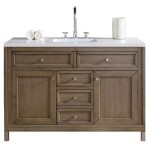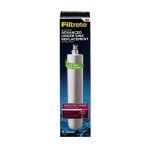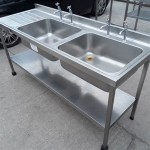How To Fix a Sinking Chair
A sinking chair can be a significant inconvenience, transforming a comfortable seat into a frustrating experience. This issue typically arises from a malfunctioning gas lift cylinder, the pneumatic mechanism responsible for height adjustment. Addressing this problem involves identifying the cause, acquiring the necessary replacement parts, and executing a repair process. This article provides a comprehensive guide on diagnosing and resolving the problem of a sinking chair.
Identifying the Cause of a Sinking Chair
The primary culprit behind a sinking chair is usually a faulty gas lift cylinder. This cylinder contains pressurized gas, typically nitrogen, which provides the upward force necessary for height adjustment. Over time, the seals within the cylinder can degrade, leading to gas leakage. As the gas escapes, the cylinder loses pressure, causing the chair to sink under weight. While the gas lift is the most common reason, other factors can contribute to the issue.
Firstly, examine the chair's overall condition. A chair subjected to excessive weight or frequent, abrupt adjustments may experience premature wear on the gas lift. Secondly, inspect the chair's base and mechanism for any signs of damage or loose connections. Loose screws or a cracked base can indirectly contribute to the sensation of sinking, even if the gas lift is partially functional. A thorough inspection of all components is crucial for accurate diagnosis.
Furthermore, consider the chair's age and usage frequency. Gas lift cylinders have a finite lifespan, and constant use accelerates their degradation. A chair that is several years old and used daily is more likely to experience gas lift failure than a newer chair used infrequently. Understanding the chair's history provides valuable context for troubleshooting.
Gathering the Necessary Tools and Replacement Parts
Before commencing any repair work, it is imperative to gather the required tools and replacement parts. The essential tools include a rubber mallet, a pipe wrench, a flathead screwdriver, safety glasses, and work gloves. The rubber mallet is used to dislodge stubborn components without causing damage. The pipe wrench provides the necessary leverage to remove the gas lift cylinder. The flathead screwdriver is useful for prying and loosening parts. Safety glasses and work gloves are crucial for personal protection during the repair process.
The most critical replacement part is the gas lift cylinder. To ensure compatibility, measure the existing cylinder's length and diameter. These dimensions are crucial for selecting a replacement that fits the chair's mechanism. Gas lift cylinders are typically categorized by their stroke length, which determines the height adjustment range. Purchase a replacement cylinder with a stroke length that matches or closely approximates the original. Gas lift cylinders can be found at online retailers, office supply stores, and hardware vendors.
Additionally, consider purchasing a new set of casters or a replacement base if these components are damaged or worn. While not directly related to the sinking issue, replacing these parts can improve the chair's overall functionality and stability. Carefully assess the condition of each component and replace as needed. Ensure that any replacement parts purchased are compatible with the chair's make and model.
The Process of Replacing the Gas Lift Cylinder
Replacing the gas lift cylinder involves several steps, requiring patience and attention to detail. First, position the chair with the base facing upwards. If the chair has wheels, remove them to prevent the chair from rolling during the repair process. The wheels usually pop out with a firm pull. Retain the wheels for later use.
Next, separate the chair's seat from the base. Locate the mechanism connecting the seat to the gas lift cylinder. This mechanism is typically secured with screws or bolts. Use a screwdriver or wrench to remove these fasteners. Once the fasteners are removed, carefully lift the seat away from the base. If the seat is stuck, gently tap the underside of the seat with a rubber mallet to dislodge it.
Once the seat is separated, the gas lift cylinder remains connected to the chair's base. This is often the most challenging part of the process. The gas lift cylinder is held in place by friction and can be difficult to remove. Using a pipe wrench, grip the cylinder firmly. Apply consistent pressure and rotate the wrench to loosen the cylinder. It may be necessary to use a rubber mallet to tap the pipe wrench for additional leverage. Continue rotating the cylinder until it is completely detached from the base.
With the old gas lift cylinder removed, prepare the chair's base for the new cylinder. Clean the opening in the base where the cylinder was previously located. Remove any debris or residue that may impede the new cylinder's installation. Apply a small amount of lubricant, such as silicone grease, to the opening to facilitate smooth insertion.
Insert the new gas lift cylinder into the chair's base. Ensure that the cylinder is fully seated and securely in place. Align the cylinder with the mechanism on the chair's seat. Reattach the seat to the base by aligning the mechanism and securing it with the screws or bolts that were previously removed. Tighten the fasteners securely, ensuring that the seat is firmly attached to the base.
Finally, reattach the wheels to the chair's base. Push the wheels firmly into the openings until they click into place. Test the chair's height adjustment mechanism by pressing the lever. The chair should raise and lower smoothly. If the chair still sinks, double-check that the gas lift cylinder is properly installed and that all connections are secure. If the issue persists, the replacement cylinder may be defective and require replacement.
Alternative Solutions and Preventative Measures
While replacing the gas lift cylinder is the most effective solution for a sinking chair, alternative methods can provide temporary relief or prevent the issue from recurring. One alternative is to use shims or spacers to limit the downward travel of the chair. These shims can be placed around the gas lift cylinder to prevent it from sinking below a certain point. This is a temporary fix and does not address the underlying problem, but it can provide a more comfortable seating experience in the short term.
Another alternative is to modify the chair's height adjustment mechanism. Some chairs have adjustable tension settings that can be tightened to provide more resistance to sinking. Check the chair's user manual or consult the manufacturer's website for instructions on adjusting the tension settings. This may not completely eliminate the sinking issue, but it can reduce its severity.
To prevent future issues with sinking chairs, adopt preventative measures. Avoid exceeding the chair's weight capacity. Overloading the chair puts excessive stress on the gas lift cylinder and other components, leading to premature wear. Periodically inspect the chair's components for signs of damage or wear. Tighten any loose screws or bolts, and replace worn parts as needed. Regular maintenance can extend the lifespan of the chair and prevent costly repairs.
Furthermore, consider the chair's environment. Exposure to extreme temperatures or humidity can accelerate the degradation of the gas lift cylinder's seals. Keep the chair in a climate-controlled environment to prolong its lifespan. Avoid placing the chair in direct sunlight, as this can damage the upholstery and other components.
Finally, choose high-quality chairs with durable gas lift cylinders. Investing in a well-constructed chair can save money in the long run by reducing the need for frequent repairs. Look for chairs with gas lift cylinders that are rated for heavy use and have a long warranty. Read reviews and research different brands to find a chair that meets specific needs and budget.

How To Fix A Sinking Desk Chair 11 Steps With Pictures

How To Fix A Sinking Desk Chair 11 Steps With Pictures

Fixing A Sinking Office Chair Why Does My Keep Going Down

How To Fix A Sinking Desk Chair 11 Steps With Pictures

Diy How To Fix Sinking Chair In Under 5 Minutes

How To Fix Office Chair From Sinking Replace Gas Cylinder

3d Printed Sinking Chair Fix By 3dwithus Pinshape

How To Fix A Sinking Desk Chair 11 Steps With Pictures

How To Fix A Sinking Office Chair Five Easy Steps Desky Canada

Sinking Desk Chair Repaired As A Duck Takes To Water







